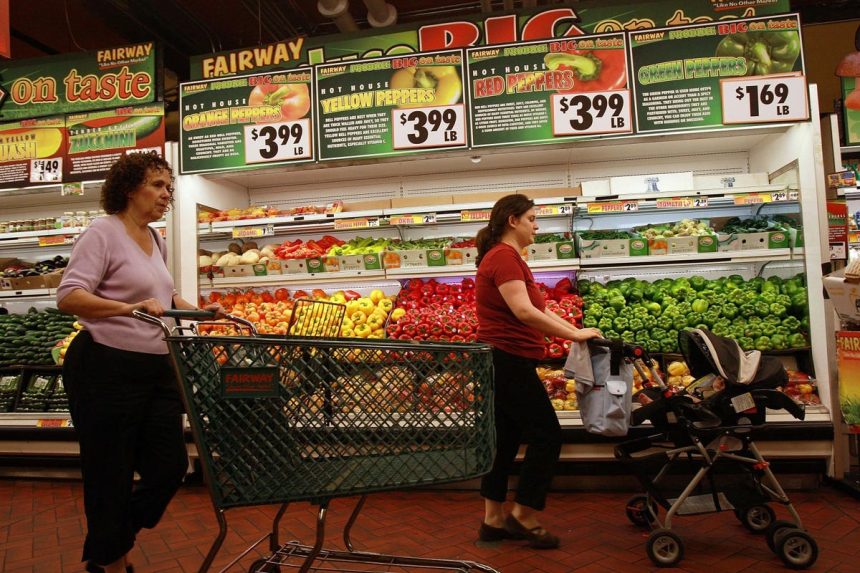Trips to the grocery store will cost consumers more and more as food inflation continues to rise. There are many reasons for this, including the war in Ukraine, shipping costs, and higher costs associated with the production of food items, including wages. How much have food prices risen in the past 12 months and how does this compare to general inflation?
The Bureau of Labor Statistics reported that food inflation has risen at a faster rate than the broader Consumer Price Index over the previous 12 months. General inflation, as measured by CPI-U, rose 3.2% for the 12-month period ending in July, while the cost of food rose 4.9% during the same period. Which food items rose the most and why? Let’s start with grain products.
Ukraine is among the world’s top producers and exporters of grains and oilseeds, both of which were negatively impacted when Russia invaded the country. This is a chief reason cereals and other grain products rose as much as 10.7% in the past year. Also rising substantially were frozen foods such as fruits and vegetables (11.8%) and noncarbonated juices and drinks (16.3%). Candy and chewing gum rose by 11.1% and the price of margarine increased by 11.3%. The following chart contains several staple food items and their percentage increase in the past 12 months.
On the far right, note how the CPI-U, a broad measure of inflation in urban areas rose 3.2%, and the cost of all food items rose at a faster rate of 4.9%. Apples led all fresh fruits higher, rising 7.5%. Why? It’s hard to know for sure, but since apples are harvested in the fall, the apples we are now consuming may have come from the southern hemisphere and with higher oil prices and labor shortages, the cost of shipping likely played a role. Interestingly, processed foods rose at a faster rate, perhaps due to a lack of workers.
Even so, the COVID rebound is the most significant reason for rising prices. As we emerged from the pandemic, supply chains were severely disrupted and coupled with the glut of fiscal stimulus from governments around the world, demand remained strong. This supply/demand imbalance was the primary reason for the current round of inflation. This is true, even though politicians continue to blame inflation on their rival party.
Some food prices fell during the past 12 months, including bacon (-10.7%); pork chops (-2.4%); pork roast, steaks, and ribs (-6.8%); chicken (-2.5%); eggs (-13.7%); and fresh whole milk (-4.5%). Prices for oranges and tangerines also fell (-3.6%), as did peanut butter (-1.7%).
How long will inflation persist? Remember, today’s inflation is a global event, affecting many countries. Moreover, because America imports many food items, the cost of shipping, labor, and tariffs will continue to play an important role in what we pay for groceries. The federal government’s excessive spending, a.k.a. fiscal stimulus, continues to push prices higher, even if politicians suggest otherwise. In short, there is too much demand relative to supply, which is the textbook definition of inflation.
What can you do to minimize the impact of inflation? I suppose you could eat a lot of citrus fruits, peanut butter (without bread), bacon and other pork, chicken, eggs, and wash it all down with a nice tall glass of fresh whole milk. But that wouldn’t provide a balanced diet.
As food prices head higher, it’s a safe bet that the Fed will continue to tighten until inflation falls to its 2.0% target. Of course, if the federal government would only reduce spending, the Fed wouldn’t need to go to such extremes in raising rates and reducing the money supply. Is that too much to ask?
Read the full article here


